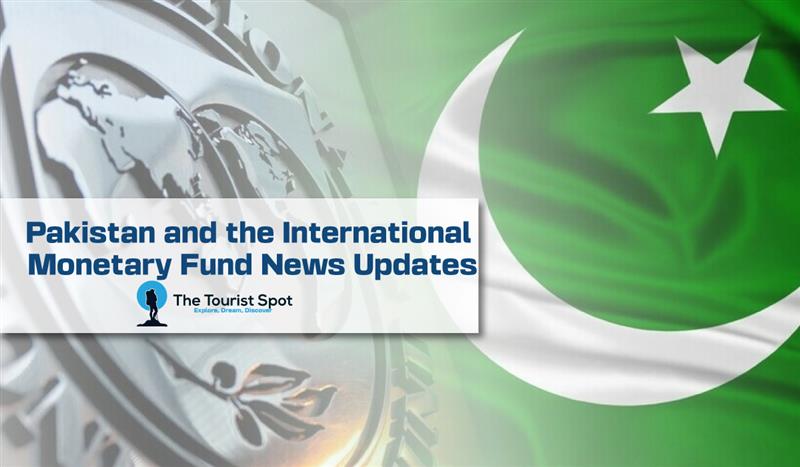The relationship between Pakistan and the International Monetary Fund (IMF) has been pivotal in shaping the country’s economic policies for decades. In 2025, this relationship continues to evolve as Pakistan navigates economic challenges, structural reforms, and international pressures. Staying updated on the latest developments between Pakistan and the International Monetary Fund is essential to understanding the country’s financial future.
Background: A Longstanding Economic Relationship
Pakistan and the International Monetary Fund have a history dating back to 1958 when Pakistan first sought IMF assistance. Since then, the country has entered into more than 20 IMF programs, ranging from standby arrangements to extended fund facilities.
Key points of the relationship:
- Financial bailouts during times of economic crisis.
- Structural reform programs focusing on fiscal discipline and economic liberalization.
- Technical assistance to modernize Pakistan’s financial and taxation systems.
Current IMF Program Details (2025)
As of 2025, Pakistan is engaged in a new IMF program aimed at stabilizing its economy amidst rising inflation, fiscal deficits, and external debt.
The major features of the current deal include:
- Loan assistance of approximately $6 billion.
- Commitments to increase tax revenues and improve energy sector management.
- Reforms to enhance the transparency of state-owned enterprises (SOEs).
Pakistan and the International Monetary Fund have agreed to a performance review system, where continued disbursements depend on Pakistan achieving specific economic targets every quarter.
Economic Reforms Under IMF Guidance
The IMF’s involvement often comes with conditions that require Pakistan to implement critical reforms. Some of the ongoing reforms include:
- Tax Reforms: Broadening the tax base and digitizing the Federal Board of Revenue (FBR) processes.
- Energy Sector: Reducing circular debt and increasing electricity tariff collection efficiency.
- Privatization Efforts: Initiating privatization plans for underperforming public sector companies.
- Monetary Tightening: Managing interest rates to control inflation.
Although these measures are difficult and sometimes unpopular, they are considered essential for achieving long-term macroeconomic stability.
Challenges Facing Pakistan
Despite support from the IMF, Pakistan faces several challenges that complicate the success of these programs:
- Persistent political instability affecting policy continuity.
- High inflation rates putting pressure on the middle and lower-income classes.
- Resistance to reforms from local industries and bureaucratic structures.
- Increasing global economic uncertainty impacting exports and foreign investment.
The partnership between Pakistan and the International Monetary Fund is a balancing act between necessary economic correction and the urgent needs of the country’s population.
Public Reaction and Debate
The involvement of the IMF often sparks heated debates within Pakistan:
- Supporters argue that IMF programs are necessary to avoid default and build sustainable growth.
- Critics argue that IMF-led austerity measures hurt the poor and slow down economic development.
Public sentiment has been mixed, with growing demands for more transparent negotiations between the government and the IMF.
International Perspectives
International economic analysts view Pakistan’s engagement with the IMF as critical for regional stability.
Successful program completion could:
- Improve Pakistan’s credit rating.
- Attract more foreign direct investment (FDI).
- Enhance Pakistan’s role in global trade and commerce.
Pakistan and the International Monetary Fund thus remain a partnership under global watch, affecting not just Pakistan but the broader South Asian economy.
Looking Ahead: What to Expect
In the coming months, key developments to monitor include:
- Pakistan’s ability to meet IMF quarterly review conditions.
- Changes in domestic economic policies post-IMF negotiations.
- New international funding opportunities linked to successful IMF compliance.
The ongoing cooperation between Pakistan and the International Monetary Fund will continue to shape Pakistan’s economic future well into the next decade.
Conclusion
The relationship between Pakistan and the International Monetary Fund is a complex but necessary alliance in 2025.
Through this partnership, Pakistan aims to achieve greater economic resilience, reform key sectors, and integrate more competitively into the global economy. While challenges remain, the journey toward economic stability and growth continues with each new agreement and reform initiative.
Stay tuned for continuous updates on this evolving story that impacts millions of lives within and beyond Pakistan.

